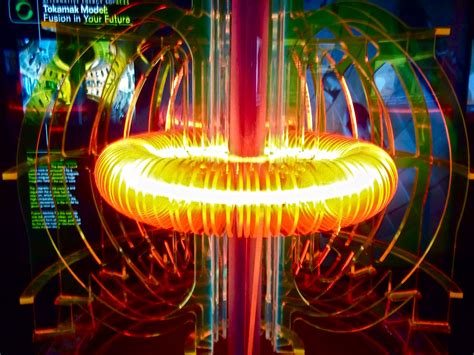
The potential cessation of penny production raises a significant question: what becomes of the estimated 114 billion pennies already in circulation across the United States? While the U.S. Mint continues to churn out these copper-plated zinc coins, the ongoing debate about their economic viability has fueled discussions about their future and the practical implications of phasing them out. The fate of these existing pennies, valued at over $1.14 billion, ranges from continued circulation and collection to potential melting for their metal content.
The penny’s struggle for survival is primarily economic. According to the U.S. Mint, it currently costs 2.72 cents to produce a single penny, a loss of over 1.7 cents per coin. This discrepancy has persisted for years, leading to significant cumulative losses for the Mint. As the Yahoo! Finance article highlights, “the U.S. Mint has been losing money on every penny it makes for years.” This financial burden, coupled with the penny’s declining purchasing power, has spurred numerous calls for its discontinuation.
However, eliminating the penny is not as straightforward as it might seem. A significant portion of the population still uses pennies in everyday transactions, and some businesses rely on them for pricing and change-making. Moreover, there is a sentimental attachment to the penny, with many Americans viewing it as a symbol of tradition and nostalgia. This emotional connection often surfaces in debates about the penny’s future.
The potential discontinuation of the penny would likely trigger a period of adjustment. Retailers would need to adapt their pricing strategies, potentially rounding prices to the nearest nickel. Consumers would need to adjust to the absence of pennies in their daily transactions. And the U.S. Mint would need to manage the logistical challenges of phasing out production and potentially dealing with the existing stockpile of pennies.
The environmental impact of penny production is also a consideration. Mining the raw materials, primarily zinc and copper, requires energy and resources, contributing to greenhouse gas emissions and other environmental concerns. Reducing or eliminating penny production could have a positive impact on the environment by reducing the demand for these raw materials.
The debate over the penny is not new. It has been ongoing for decades, with economists, policymakers, and the public weighing the pros and cons of its continued use. The increasing cost of production, the penny’s limited purchasing power, and the environmental impact of its production have all contributed to the debate.
As the U.S. Mint grapples with the economic realities of penny production, the question of what to do with the existing pennies remains a key consideration. The answer will likely depend on a variety of factors, including the speed and manner of any potential phase-out, the level of public support for retaining the penny, and the economic feasibility of alternative uses for the existing coins.
The fate of the 114 billion pennies is a complex issue with significant economic, social, and environmental implications. As the debate continues, it is important to consider all perspectives and weigh the potential consequences of any decision regarding the future of this iconic coin.
In-Depth Analysis
The continuous minting of pennies, despite their production cost exceeding their face value, represents a unique challenge for the U.S. Mint. The article from Yahoo! Finance emphasizes the substantial losses incurred annually due to the penny, underscoring the economic inefficiency of its continued production. “The U.S. Mint has been losing money on every penny it makes for years,” the article reiterates, signaling a systemic issue that demands attention.
One proposed solution is to cease penny production altogether. This, however, raises the crucial question of what happens to the existing stockpile of 114 billion pennies. Several scenarios are possible, each with its own set of implications:
-
Continued Circulation: The most straightforward option is to allow the existing pennies to remain in circulation. This would require no immediate action from the U.S. Mint or the government. However, as inflation continues to erode the penny’s purchasing power, its usefulness in everyday transactions would likely diminish over time. People might start discarding them or simply avoiding their use, leading to a gradual disappearance from circulation.
-
Voluntary Redemption Programs: The government could implement a voluntary redemption program, encouraging people to turn in their pennies in exchange for other denominations. This would help to reduce the number of pennies in circulation and potentially allow the U.S. Mint to melt them down for their metal content. However, such a program would require significant public awareness campaigns and logistical planning.
-
Mandatory Recall: A more drastic approach would be a mandatory recall of all pennies. This would require everyone to turn in their pennies by a certain date, after which they would no longer be considered legal tender. This option would be the most effective way to remove pennies from circulation, but it would also be the most disruptive and potentially unpopular.
-
Melting for Scrap Value: Pennies are made primarily of zinc, with a copper plating. The metal content of a penny is worth more than its face value, especially when considering the rising prices of these metals. Therefore, the U.S. Mint could melt down the existing pennies and sell the metal as scrap. This would generate revenue for the government and reduce the need to mine more raw materials. However, the environmental costs of melting down such a large quantity of coins would need to be considered.
-
Collectible Value: While the vast majority of pennies are worth only their face value, some rare or old pennies can be quite valuable to collectors. If the penny were discontinued, the value of certain collectible pennies could increase. However, this would likely only affect a small fraction of the total number of pennies in circulation.
The decision of what to do with the existing pennies will depend on a variety of factors, including the economic costs and benefits of each option, the potential impact on consumers and businesses, and the political feasibility of implementing any particular solution.
Background Information
The penny has a long and storied history in the United States. It was first authorized in 1792, and it has been in continuous production ever since. Over the years, the penny’s composition has changed several times. Originally, it was made of pure copper. However, during World War II, copper was needed for the war effort, so the penny was temporarily made of zinc-coated steel. In 1982, the penny’s composition was changed to its current form: a zinc core with a copper plating.
The penny has been the subject of debate for decades. Its supporters argue that it is a necessary part of the monetary system, providing a convenient way to make small transactions. They also point to the penny’s historical significance and its sentimental value to many Americans.
Opponents of the penny argue that it is a nuisance, costing more to produce than it is worth and serving little practical purpose in an increasingly cashless society. They also argue that the penny contributes to inflation by making it more difficult for retailers to lower prices.
Several countries have already eliminated their lowest-denomination coins, including Canada, Australia, and New Zealand. These countries have generally found that the transition to a penny-less system is relatively smooth and that it does not have a significant impact on prices.
Expanded Context
The issue of the penny’s viability is intertwined with broader trends in the economy and consumer behavior. The rise of digital payment methods, such as credit cards, debit cards, and mobile payment apps, has reduced the need for cash transactions. Many consumers now prefer to pay for goods and services electronically, even for small purchases. This trend has further diminished the penny’s usefulness in everyday life.
Inflation has also played a significant role in the penny’s declining value. Over time, the purchasing power of the penny has eroded significantly. What could once be purchased for a penny now costs several dollars. As a result, the penny has become increasingly irrelevant in the context of modern prices.
The U.S. Mint’s continued production of pennies, despite the financial losses it incurs, can be seen as a reflection of political and social factors. There is a strong lobby in favor of keeping the penny, consisting of zinc producers, vending machine operators, and some consumer groups. These groups argue that eliminating the penny would harm their interests and that it would be unpopular with the public.
The debate over the penny is also connected to broader discussions about monetary policy and the role of government in the economy. Some argue that the government should not be in the business of producing coins that cost more than they are worth. Others argue that the government has a responsibility to provide a stable and efficient monetary system, even if it means subsidizing the production of certain coins.
Potential Impacts of Eliminating the Penny
If the United States were to eliminate the penny, there would be several potential impacts on consumers, businesses, and the economy as a whole:
-
Rounding: Retailers would likely round prices to the nearest nickel. This could lead to some prices increasing and some prices decreasing. Studies have shown that rounding tends to be revenue-neutral for retailers, meaning that they do not gain or lose a significant amount of money overall. However, individual consumers could experience small gains or losses depending on their purchasing habits.
-
Psychological Effects: Some people may experience psychological discomfort from the absence of pennies. They may feel that prices are higher or that they are being cheated out of small amounts of money. However, these feelings are likely to fade over time as people adjust to the new system.
-
Impact on Charities: Charities that rely on penny donations could be affected by the elimination of the penny. However, they could adapt by accepting donations in other forms or by focusing on larger denominations.
-
Administrative Costs: Eliminating the penny would require some administrative costs for the U.S. Mint and for businesses that handle cash. However, these costs would likely be outweighed by the savings from no longer producing pennies.
-
Economic Efficiency: Overall, eliminating the penny would likely lead to a more efficient economy. It would reduce transaction costs, simplify accounting, and free up resources that could be used for other purposes.
Arguments in Favor of Keeping the Penny
Despite the economic arguments against the penny, there are also several arguments in favor of keeping it:
-
Historical Significance: The penny has a long and important history in the United States. It is a symbol of American tradition and values.
-
Sentimental Value: Many Americans have a sentimental attachment to the penny. They remember using it as children or collecting it as a hobby.
-
Fairness: Some argue that eliminating the penny would disproportionately harm low-income individuals who rely on cash transactions.
-
Political Considerations: As previously stated, powerful lobby groups have a vested interest in keeping the penny.
Conclusion
The fate of the 114 billion pennies in circulation is a complex issue with no easy answers. The economic arguments against the penny are strong, but there are also valid arguments in favor of keeping it. Ultimately, the decision of whether or not to eliminate the penny will depend on a careful weighing of the costs and benefits, as well as a consideration of the political and social factors involved. As the United States continues to evolve economically and technologically, this debate will likely continue to be a relevant topic for discussion.
Frequently Asked Questions (FAQ)
-
Why is the U.S. Mint losing money on every penny it produces?
The cost of materials (primarily zinc and copper), manufacturing, and distribution exceeds the penny’s face value of one cent. The Yahoo! Finance article confirms this by stating, “the U.S. Mint has been losing money on every penny it makes for years.” The rising costs of these materials combined with the complex minting process contribute to this financial loss.
-
What are some of the proposed solutions for dealing with the existing 114 billion pennies if production stops?
Several options exist, including allowing pennies to remain in circulation until they naturally disappear, implementing voluntary redemption programs, mandating a recall of all pennies, melting them down for their metal value, or allowing the collectible value of older pennies to increase naturally.
-
How would eliminating the penny affect consumers?
The primary impact on consumers would likely be the rounding of cash transactions to the nearest nickel. While some purchases might be slightly more expensive, others would be slightly cheaper, potentially leading to a revenue-neutral effect overall. Some consumers might initially experience psychological discomfort from the absence of pennies.
-
Have other countries eliminated their lowest-denomination coins, and what were the results?
Yes, countries like Canada, Australia, and New Zealand have eliminated their one-cent coins (or equivalent). The transition has generally been smooth, with minimal impact on prices or economic activity. Rounding became a standard practice.
-
What are the arguments in favor of keeping the penny in circulation?
Arguments include its historical and sentimental value to many Americans, the belief that it’s essential for fair pricing, and the potential impact on charities that collect pennies. There are also political considerations stemming from lobby groups with vested interests in penny production.









